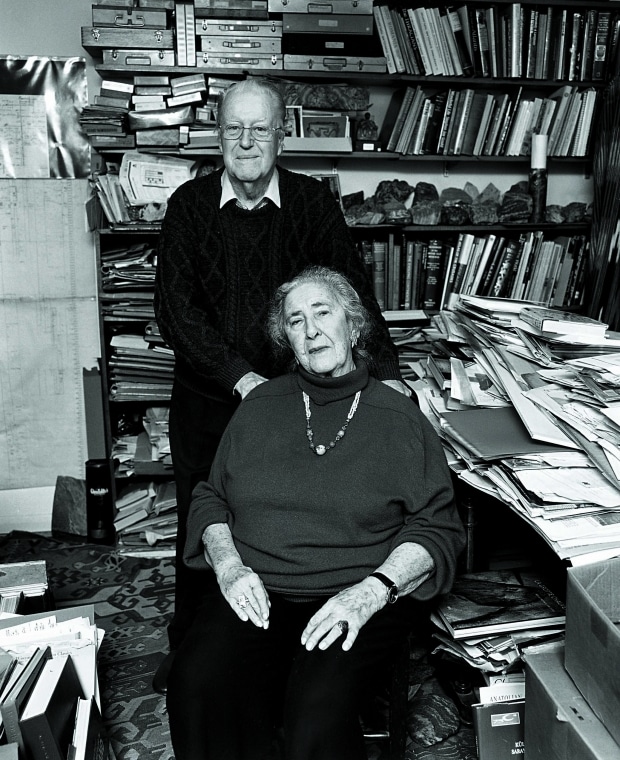James Mellaart (born November 14, 1925, London) is a British archaeologist and author who is noted for his discovery of the Neolithic settlement of Çatalhöyük in Turkey. www.catalhoyuk.com
He lectured at the University of Istanbul and was an assistant director of the British Institute of Archaeology in Ankara. In 1951 Mellaart began to direct excavations on the sites in Turkey with the assistance of his Turkish-born wife Arlette. He helped to identify the “champagne-glass” pottery of western Anatolia in the Late Bronze Age, which in 1954 led to the discovery of Beycesultan. After that expedition’s completion in 1959, he helped to publish its results. In 1964 he began to lecture in Anatolian archaeology in Ankara.
When Mellaart excavated Çatalhöyük site in 1961, his team found more than 150 rooms and buildings, some decorated with murals, plaster reliefs, and sculptures. The site has since been seen as important as it has helped in the study of the social and cultural dynamics of one of the earliest large permanently occupied farming settlements in the Near East.
According to Mellaart’s theories, Çatalhöyük was a prominent place of mother goddess worship. However, many other archaeologists did not agree and the dispute created a controversy. The Turkish government then closed up the site. The site was unattended for the next 30 years until excavations were begun anew in the 1990s.
The city as a whole covers roughly 32.5 acres (130,000 m²), and housing 5,000–8,000 people, whereas the norm for the time was around one tenth of this size. The site stirred great excitement when Mellaart announced it and has since caused much head scratching. In fact, more recent work has turned up comparable features at other early Neolithic sites in the Near East, and this has benefited many people in their understanding of the site so that many of its onetime mysteries are no longer real issues.
Mellaart’s mount… where all began.

James and Arlette Mellaart – Photograph by Charles Hopkinson

